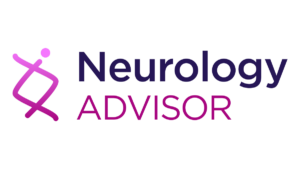
In an era where we all aspire to age gracefully, the allure of a simple blood or saliva test claiming to reveal our “biological age” is undeniable. These tests promise to measure the “wear and tear” on our bodies at a molecular level, offering insights into how well we are truly aging. Many individuals have taken to social media to share their results, often boasting about how “young” they are and the secrets to their success.
While chronological age simply reflects the number of years one has lived, biological age aims to provide a more accurate picture of one’s physical condition. But how reliable are these tests? Do they truly offer valuable insights, or are they merely marketing gimmicks masquerading as science?
Understanding the Science Behind Biological Age Tests
Biological age tests work by examining the chemical processes that enable our bodies to function. Over time, these processes can cause damage and lead to a decline in cellular, tissue, and organ activity. Specifically, these tests often focus on DNA methylation, where chemical tags known as methyl groups attach to DNA and influence gene expression. This process, known as methylation, occurs in predictable patterns as we age and are exposed to environmental factors.
Researchers have developed “epigenetic clocks” to estimate biological age by analyzing methylation levels at specific genome sites. These clocks have shown promise in predicting the risk of death and age-related diseases more accurately than chronological age.
Research Findings: Population vs. Individual Use
While the scientific community acknowledges the potential of epigenetic clocks in research settings, their application at an individual level is more contentious. Studies indicate that epigenetic clocks correlate strongly with lifestyle factors such as smoking and diet, and can even predict the risk of cardiovascular diseases.
“Epigenetic biological age estimation is a better predictor of the risk of death and aging-related diseases than chronological age.”
However, when it comes to individual testing, the precision of these tests—often referred to as the “signal to noise ratio”—is a significant concern. A 2022 study revealed that identical samples could yield biological age estimates that vary by up to nine years, raising questions about their reliability.
Commercial Variability and Limitations
The commercial landscape for biological age tests is diverse, with significant variability in precision between providers. This is compounded by the lack of standardization in testing methods and algorithms used to estimate biological age. As a result, the same sample could produce different results depending on the provider.
Moreover, these tests are not diagnostic tools. While they may indicate general aging trends at a cellular level, they do not offer specific insights into why someone might be aging faster or slower than expected. Consequently, the advice provided by test companies often boils down to generic health recommendations.
Are These Tests Worth the Investment?
Despite the potential benefits, the current state of biological age testing presents challenges. At approximately $500 per test, they are not an inexpensive investment. While companies may have good intentions, their primary goal remains profit.
“For this to become a reality, tests will need to become more reproducible, standardized across providers, and validated through long-term studies.”
Until such advancements are made, these tests may offer limited real value to individuals. Instead, the focus should remain on well-established health practices that are known to enhance longevity and well-being.
Proven Strategies for Healthy Aging
Fortunately, the path to a longer and healthier life does not require knowledge of one’s biological age. Key lifestyle changes can significantly impact health outcomes:
- Improving diet quality
- Increasing physical activity
- Ensuring adequate sleep
- Quitting smoking
- Reducing stress
- Prioritizing social connections
These strategies are backed by extensive research and can be implemented immediately to improve overall health.
In conclusion, while biological age tests hold promise for the future, they currently serve more as a novelty than a necessity. By focusing on proven health practices, individuals can take meaningful steps toward aging gracefully without the need for these tests.







